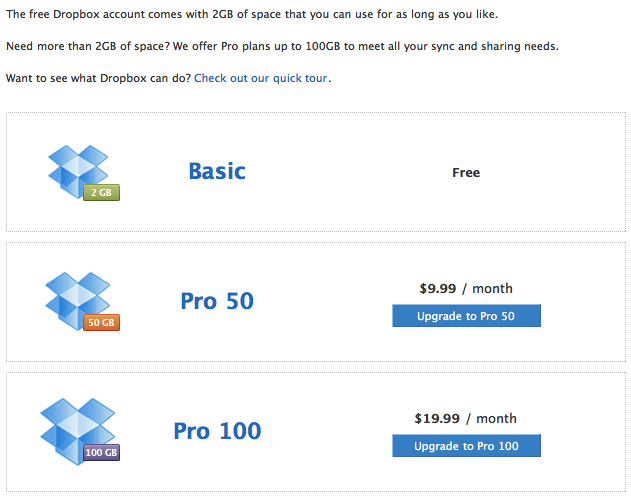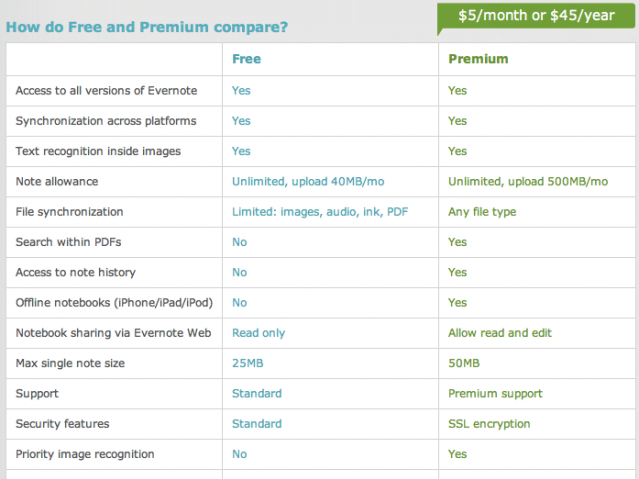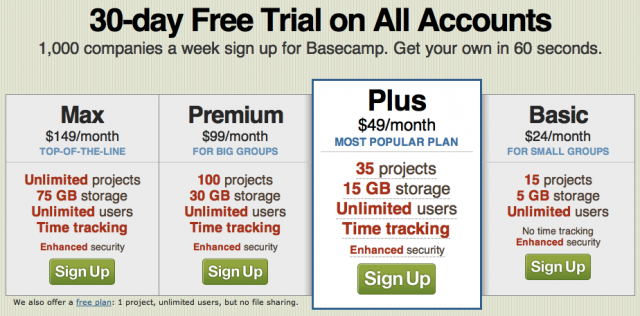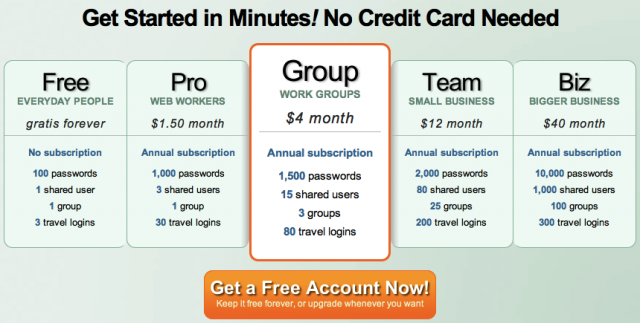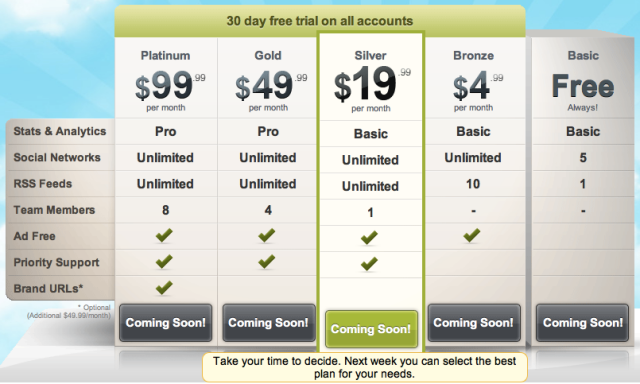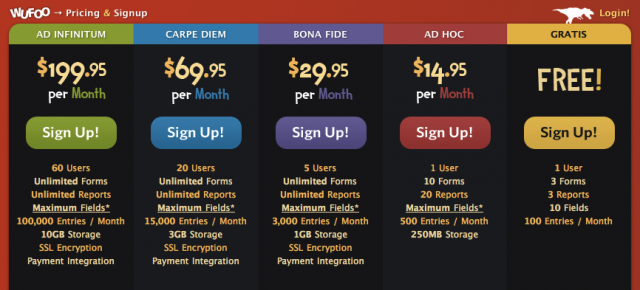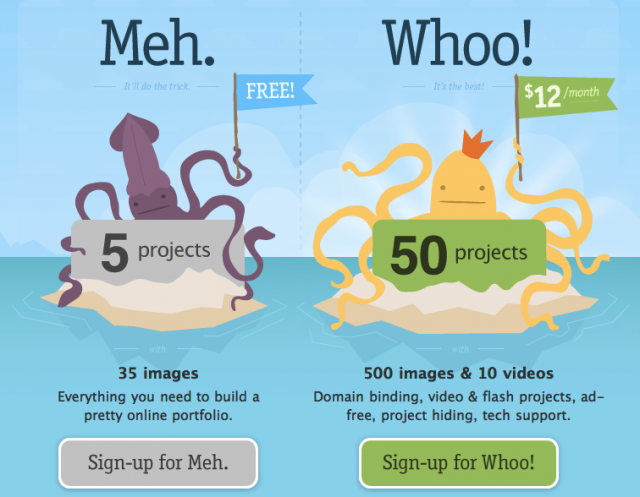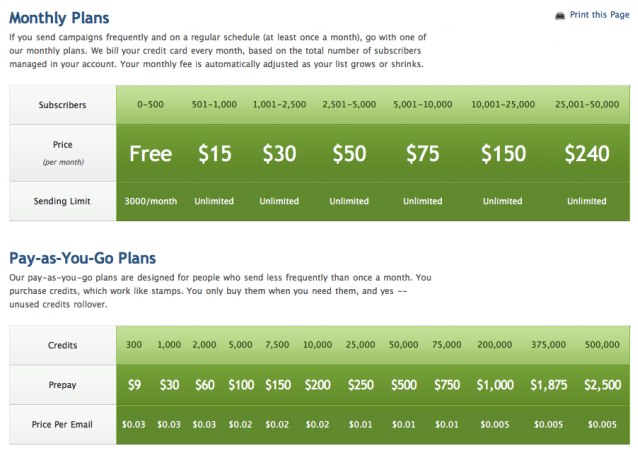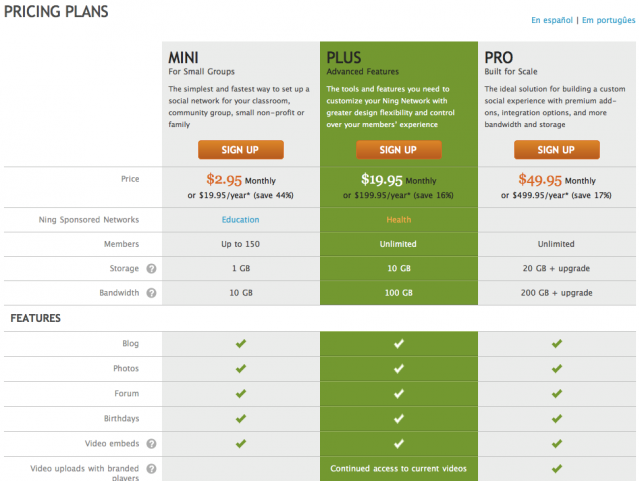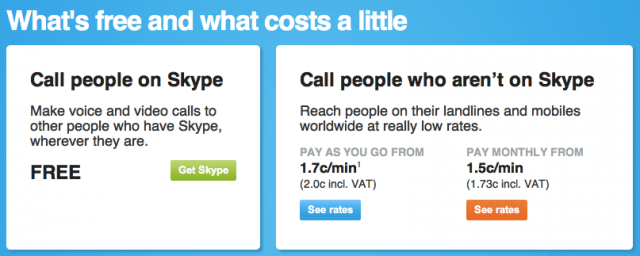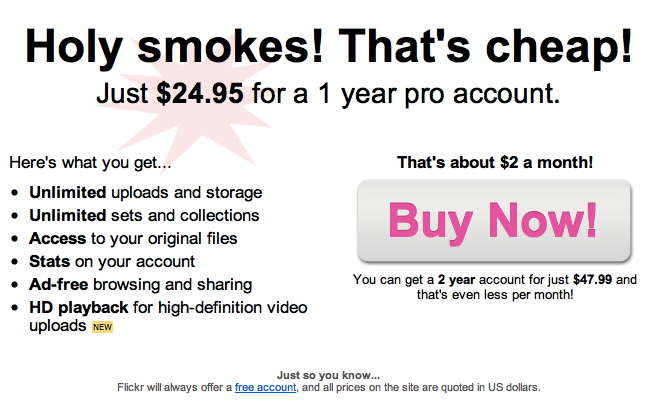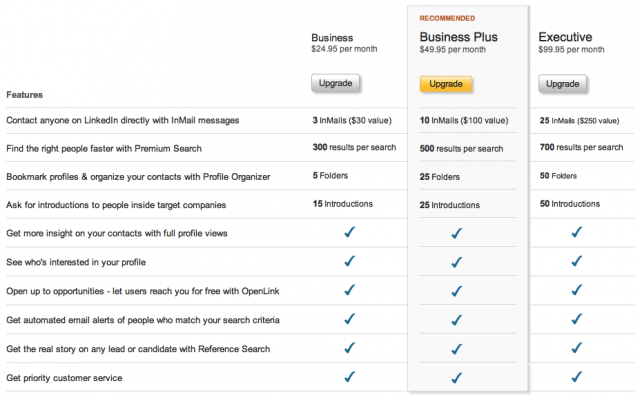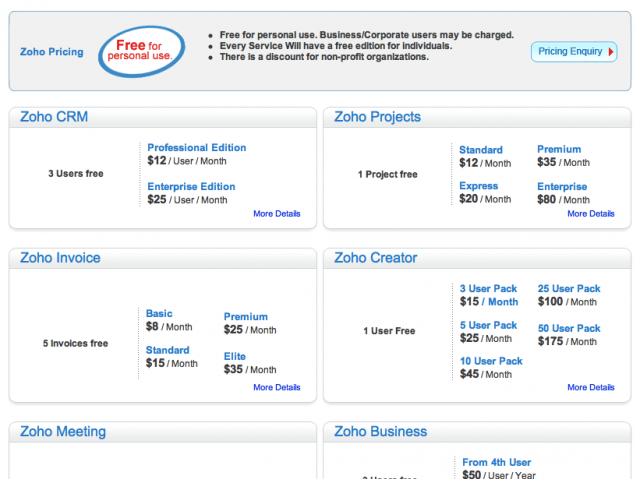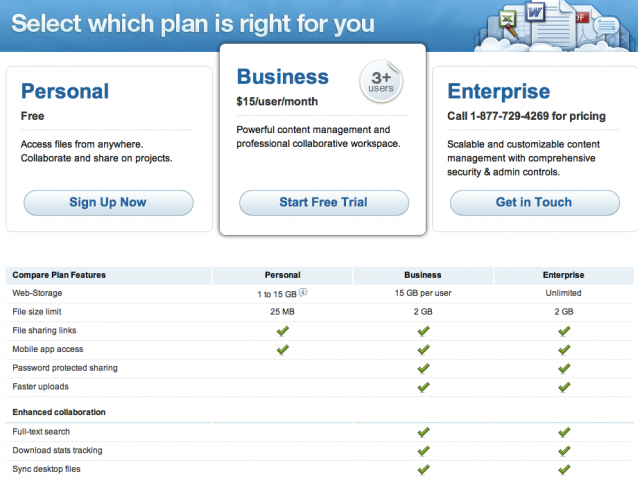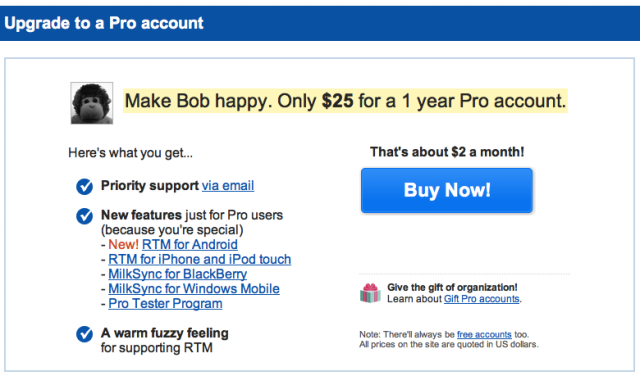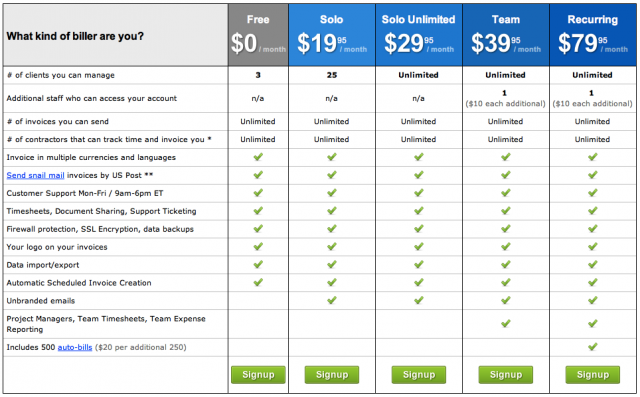Introduction
Thanks to this post I begin the writing of a new section of this blog, called Startup Corner.
In this category we will write about the development of our startup project: Iubenda, a legal generator (mainly privacy policies) for websites, that highly automates the generation process making it simple and painless.
We will also talk about everything that’s interesting when working on a startup, and what you’re about to read counts as the first example.
Iubenda will follow a Freemium Business Model and we are working hard to define the details of our future offer. Looking for Freemium services around the web, I tried to reach a deep understanding of how Freemium works, finding the most successful stories.
Many on the internet consider Freemium to be the business model able to save the web 2.0 from the terrible spiral of financially sustaining free websites.
Definition and Origin
Quoting Wikipedia, «Freemium is a business model that works by offering basic Web services, or a basic downloadable digital product, for free, while charging a premium for advanced or special features. The word “freemium” is created by combining the two aspects of the business model: “free” and “premium”.».
All started in March 2006, when Fred Wilson wrote a post called My Favorite Business Model in which he outlined the Freemium concept as it follows:
Give your service away for free, possibly ad supported but maybe not, acquire a lot of customers very efficiently through word of mouth, referral networks, organic search marketing, etc, then offer premium priced value added services or an enhanced version of your service to your customer base.
The term “Freemium” came from this comment, written by Jarid Lukin.
Fred Wilson made the rest and the word “Freemium” slowly became popular.
Best Freemium Articles and Resources
Before exposing the showcase, I would share with you what I consider the most useful articles about this argument.
- Fred Wilson was the first to talk about Freemium. As already said, in March 2006 he wrote a post called My Favorite Business Model in which he outlined the Freemium concept. After that, he went back on the argument more than a single time.
I suggest you to read Freemium and Freeconomics, where Fred talks about the importance of charging for web services only after having a wide free customer base: «Once you have built that audience, you can deliver upsells via freemium models, you can monetize it via advertising and you can branch out into other services which are easier to monetize.». - In the post I just mentioned, Fred Wilson refers to an article by his partner Albert called The Continuing Confusion About Free which offers a simple but strong demonstration of free’s unsustainability, facing the problem on a marginal perspective.
- Dropbox is one of the most successful web services based on a Freemium business model. I recommend to watch this presentation, called Dropbox Startup, Lesson Learned, which is useful to understand the difficult of building a customer base.
Always about Dropbox, I also suggest this video-interview with Sean Ellis, appeared on Mixergy, to learn something more about Freemium and scalable growth.
Here you can find some more number. - Evernote is another great example of Freemium project. In this video you can see the CEO Phil Libin who discusses the detailed revenues and underlying statistics of Evernote, including conversion rates.
There are many things I like in this video and I watched it once again on this occasion.
Here you’ll find another really interesting article, provided by VentureBeat.
Something that needs to be mentioned: «It was founded in 2005 by Stepan Pachikov, an Azerbiijan-born entrepreneur who founded a number of Russian software companies.». In other words, success could need time, and much patience. - This suggestion is about another startupper who personally faced the problem of designing a Freemium offer. I’m talking about one of the three Carbonmade‘s founders, Spencer Fry, who recently wrote an interesting post titled How to run a freemium business. When I met the article, I spent a minute or two reading these words, thinking there was a mistake: «Once you’ve arrived at a number, make sure that it’s on the low end of what you’d be willing to pay, as it’s much easier to raise prices than lower prices. The reason for this is that when you raise the price and protect all of your current customers from the new price by grandfathering, they feel as if they got a deal for being early adopters and will be really happy. If you were to lower prices on them, they’d feel as if you somehow cheated them. This may go against common sense, but it is the prevailing thinking when it comes to lowering or raising prices.». I can’t imagine if Spencer knows it, but that’s the exact opposite of what you are taught in any marketing course. That’s probably because the most common benchmark, when talking about marketing, is the supermarket (or a non-specified traditional and product-based view), where lowering is much easier than raising.
Those words were really helpful to me, and I thank Spencer for them. A web service offered in subscription is definitely different from a common product, sold in a physical market. - The editor-in-chief of Wired Chris Anderson too talked about Freemium. The article makes a report of his beliefs, in which I particularly like this sentence: «What will people pay for? They will pay to save time. Younger people have more time than money. Older people have more money than time.».
- Liz Gannes wrote an article for Gigaom called Case Studies in Freemium: Pandora, Dropbox, Evernote, Automattic and MailChimp. The title is quite explanatory itself and the reading is highly suggested.
- Seth Levine’s Pricing models, the freemium myth and why you may not be charging enough for your product is the dissenting voice of this list of resources. He warns against the danger of considering Freemium as a model suitable for any type of product, just because it’s cool and there’s much talk about it.
Let’s start the Showcase
I’m about to show what, in my opinion, are the best examples of Freemium web services, including a comment on each one based on my opinion. The order is random.
Dropbox
The offer provided by Dropbox is really clear and simple. They propose a differentiation based on a single dimension, leaving all the rest aside. They probably trust that their customers will always start from the free plan, then they’ll love the product and hopefully upgrade to Premium after reaching those first 2 GB.
The price is also really easy to justify to customers, because it’s based on something simple and perceptible.
Dropbox reached 4 Million users some time ago.
Evernote
Evernote adds more complexity to the offer, compared to Dropbox, but the model is quite similar. Both Evernote and Dropbox try to lock their free users in the use of the product, forcing heavy ones to face the dilemma “pay or switch?”. This more complexity is probably consistent with the technological characteristics of the product and has a communicating role.
Unlike Dropbox’s GB, the uploadable MB/mo limit offered by Evernote is very difficult to calculate before using the product.
Once again I say: they have a great product and they rely on this, trusting that those among their users who find them good will switch to premium, looking for more.
Evernote has just reached 4 Million users.
Basecamp, Passpack and Hootsuite
These three services have a really similar pricing structure.
They target business users, but they also dedicate a free and limited offer to singles wanting to try the product.
The differentiation in terms of features is somewhere between the simple and the complex. They chose a limited number of key features and focused on them.
Hootsuite can also be a great example of switching from free from freemium, transition that’s still in progress. It’s interesting to see how Hootsuite had to reconsider its first freemium proposal (the one you see in the image) publishing a post of clarifications. The most critical point was the number of team members, which raised the complaints of Hootsuite’s users.
Wufoo
I left Wufoo aside because I consider it as something great. Wufoo took something really trivial as web forms and made it a business by adding value and a bit of sane coolness.
I must underline those lovely plans’ names, taken from the Latin.
Carbonmade
Carbonmade provides everything you need to build a pretty online portfolio and those 260000+ users surely makes it a success story.
As shown in the image, Carbonmade’s model understands (once again) the huge importance of locking the users into the product. They will need the premium plan when they’ll reach the imposed cap. The other features, like “video & flash projects”, are there to make the premium user even delighted.
MaliChimp and CampaignMonitor
I like this example because it compares the different approaches of two competitors: MailChimp and CampaignMonitor both offer an email marketing web software.
What’s clear is that, mainly, MailChimp chooses complexity, while CampaignMonitor simplicity. But there’s more.
Each one of these two services have had the ability to differ from the other, offering the cheapest solution for a specific way and need of use.
It must me noted that MailChimp’s pay-as-you-go plan is an adjustment which clearly follows CampaignMonitor’s offer.
Ning
Ning is one of the biggest failures in the adoption of a Freemium business model and it must be mentioned because of this.
Recently, Ning switched to Premium after laying off 40% of its staff, the clear signal that not just something went wrong.
Their offer is now very similar to a common hosting provider, especially in terms of prices.
Skype, Flickr and Linkedin
Skype, Flickr and Linkedin are the web businesses with the widest spreading among the ones adopting a Freemium model. They must appear every time you talk about this business model.
Seth Levine says «to be perfectly clear, I’m generally not a fan of the $19.99 entry price point for a product/service sold to business users. You can charge more. And you should.». Linkedin is made for business and consistently charges high prices.
Zoho
Zoho is a glaring example of confusing and complex pricing page.
How to avoid a terrible headache? Probably just switching to Google Docs.
Box.net, RememberTheMilk and FreshBooks
Below some more noteworthy example of what I’ve just wrote about.
Conclusions
I hope that this article will be a point of reference for anyone interested in starting a web project with Freemium as business model, as indeed I am.
I plan to write again about this argument and the way I’ll implement Freemium on iubenda.
You can follow me and my startup project in the following ways:
- Twitter and Facebook to follow me.
- Twitter, Facebook and this blog’s feed to follow my project, iubenda.
Updates:
2010/08/23
- Added Carbonmade to the list of examples.


